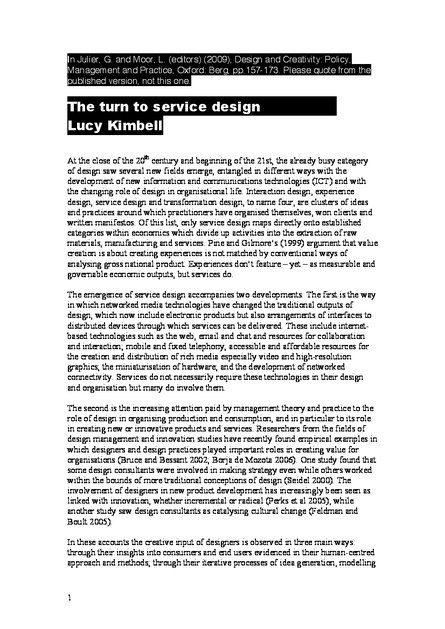
At the close of the 20th century and beginning of the 21st, the already busy category of design saw several new fields emerge, entangled in different ways with the development of new information and communications technologies (ICT) and with the changing role of design in organisational life. Interaction design, experience design, service design and transformation design, to name four, are clusters of ideas and practices around which practitioners have organised themselves, won clients and written manifestos. Of this list, only service design maps directly onto established categories within economics which divide up activities into the extraction of raw materials, manufacturing and services. Pine and Gilmore’s (1999) argument that value creation is about creating experiences is not matched by conventional ways of analysing gross national product. Experiences don’t feature – yet – as measurable and governable economic outputs, but services do.
